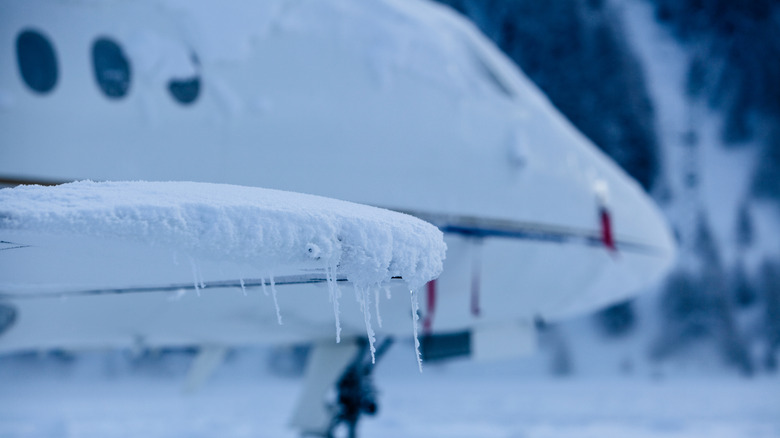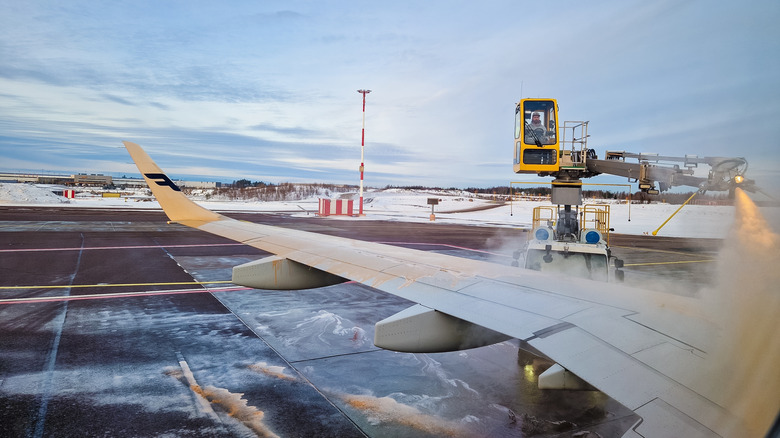Here's How Much It Costs To De-Ice A Plane Before Takeoff
There are many costs associated with flying: your ticket, extra luggage, and on-board Wi-Fi (don't forget to charge your electronics), especially if you're the kind of person who loves to be connected 24/7. But have you ever wondered what the costs of flying are for airlines? Operational expenses like parking at the airport, storage in hangars, and delayed take-off slots all cost money — and lots of it. However, these are the things you might expect. Other airline costs might surprise you — for example, the charge for de-icing a plane.
Just like your car in winter, a plane's windscreen can ice over after a cold night. But unlike your car, a can of anti-freeze and a credit card just won't cut it. And it's not just the airplane's windscreen that needs treatment in frosty weather: the wings, landing gear, and propellers can all be at risk of icing over.
Data from Air Charter, a leader in global private jet charter services, has revealed the costs associated with such a task. As you'd imagine, the bigger the plane, the higher the de-icing cost. For example, according to Air Charter, to de-ice a small propeller plane costs just $250. That's 50 gallons of fuel at $24 a gallon. However, for an airliner (non-regional), the cost could be as high as $13,000. Air Charter also notes that if you're chartering a private jet, you're liable for this charge. In all cases, an aircraft cannot legally take to the skies with snow or ice — all of it must be removed before departure.
Why and how do you de-ice a plane
Ice and snow on a plane can be more dangerous than you'd think. Even a thin glazing on the wings, tail, or engines can change how air flows. This can reduce overall lift, making the aircraft unstable. It can also affect instruments and engine performance, which is a nightmare for pilots. De-icing serves multiple functions: it clears the plane, keeps flights safe even during extreme winter weather, ensures smooth take-offs, and allows pilots to remain fully in control.
The procedure is much like what you might do with your car; a plane is covered with de-icing fluid (albeit a much larger amount). The special liquid is a mixture of glycol (derived from ethylene) and water, and is often dyed orange. This is to make it easy to spot the parts of the plane that have already been covered, so don't be alarmed if you see people with large hoses covering your plane with this unusual liquid. Some compare its smell to sweet maple syrup or almonds.
So, next time you're stuck on the ground on a frosty morning, delayed en route to your warm vacation, you'll know how vital de-icing is. It might be one of the airline's less visible costs, but it's crucial for functioning in cold temperatures. And while it can add hundreds or even thousands of dollars to a flight's expenses, it's a small price to pay for the safety of passengers and crew. And don't forget to have travel insurance for times when you are delayed or your flight is canceled.

